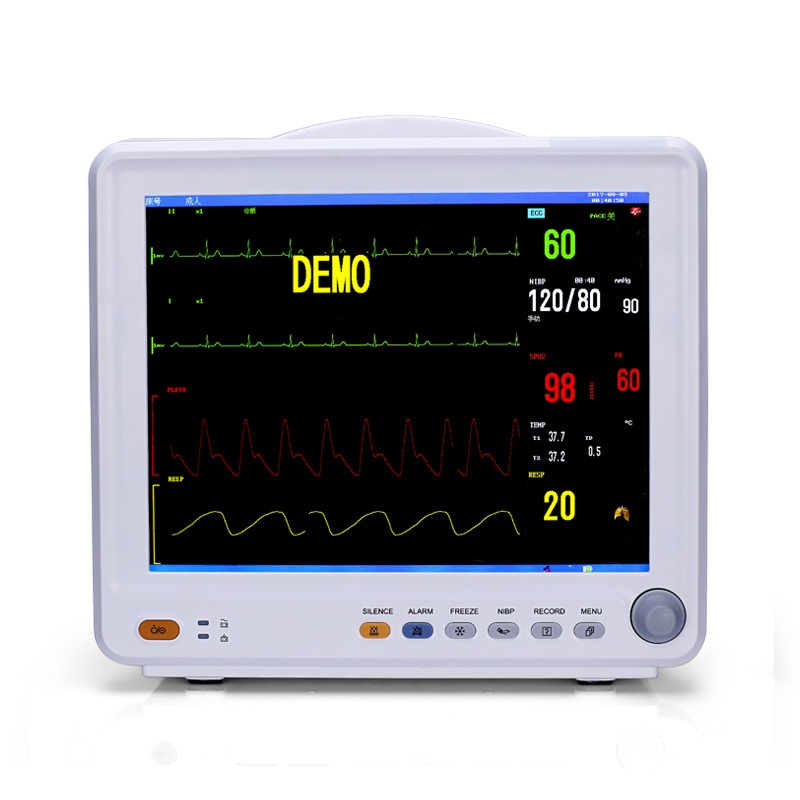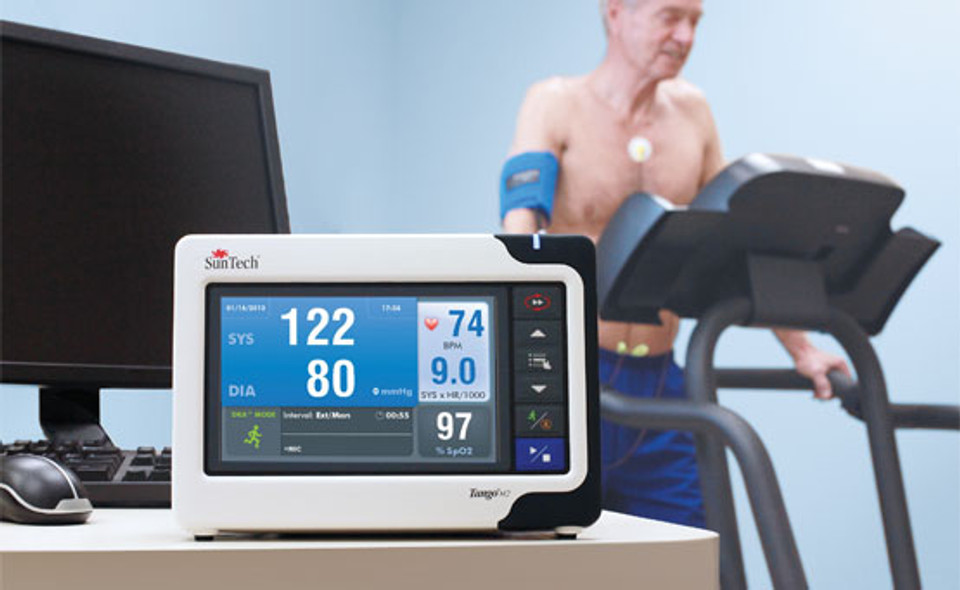

- #CARDIAC MONITOR THAT CONTIUSLY MONITY ST ELEVATION FULL#
- #CARDIAC MONITOR THAT CONTIUSLY MONITY ST ELEVATION PROFESSIONAL#
We observed ST segment elevation in leads V3, V4, III, and aVF and ST segment depression in leads aVL and aVR. Normal sinus rhythm and sinus tachycardia were the most common rhythms preceding hypotension. Significant rhythm, repolarization, and conduction changes from baseline were observed prior to severe hypotension ( p < 0.05). All animals (30/30) had ECG changes in repolarization or depolarization during cyanide infusion. The mean amount of cyanide infused was 5 mg/kg (range 2.5–6.3 mg/kg). The mean time to hypotension was 31 min (range 16–39). The mean weight for the 30 swine at baseline was 48 kg (range 45–52), pulse rate 86 beats/min (range 55–121), and systolic blood pressure 109 mmHg (range 90–121). Repeated measures of analysis of variance were used to determine significance. ECGs were obtained at baseline, every 5 min during infusion, and at the development of hypotension. As part of a larger study comparing antidotes for cyanide-induced shock, 30 swine were anesthetized and monitored and then intoxicated with a continuous cyanide infusion until severe hypotension (50 % of baseline mean arterial pressure) occurred. Our primary objective was to determine if there is a clinically significant change in ST segment deviation measured on ECG during intravenous cyanide infusion that may predict cyanide-induced hypotension. A clinical finding that may precede or predict cyanide-induced hypotension may be a trigger to provide treatment earlier and improve outcomes in cyanide toxicity.

Until the next time: Be healthy, be happy, and be great advocates for your patients! FigureĬoordinator of Continuing Education, Clinical Education & Research, Virtua Health, Marlton, N.J.Cyanide causes severe cardiac toxicity resulting in tachycardia, hypotension, and cardiac arrest however, the clinical diagnosis can be difficult to make. If you're currently using continuous ST segment monitoring in your unit, double-check that this practice is consistent throughout your hospital on other units that continually monitor cardiac rhythms.

Both are readily available for use to drive your practice. Also, review AACN's practice alert for ST Segment Monitoring at. Visit to review The AHA Scientific Statement on Practice Standards for Electrocardiographic Monitoring in Hospital Settings. If they don't, when the time comes to evaluate new equipment make sure that you recommend continuous ST segment monitoring. Find out if your monitors have ST segment monitoring functions. Since February is American Heart Month, I encourage everyone to evaluate your practice regarding ST segment monitoring. Many of today's cardiac monitors have the capability of continuously monitoring ST segments but this function is very underutilized. This strategy can help prevent or at least reduce the size of the infarct. Continuous ST segment monitoring has the potential to detect ischemic changes even when patients are asymptomatic. 1 Yet when reviewing data from national ACS registries like CRUSADE (Can Rapid risk stratification of UnStable Angina patients suppress aDverse outcomes with Early implementation of the ACC/AHA guidelines), we're consistently less aggressive in adhering to the ACC/AHA Treatment Guidelines for NSTEMI patients compared to our adherence to the same guidelines for STEMI patients.Ĭontinuous ST segment monitoring can significantly enhance the care we provide to all ACS patients, especially UA/NSTEMI patients. About 70% (1.17 million) present with UA/NSTEMI. ACS encompasses two patient groups: those who present with either unstable angina/non-ST-elevation myocardial infarction (UA/NSTEMI) or ST-elevation myocardial infarction (STEMI).

My new appointment as editor-in-chief of Nursing2009 Critical Care provides me a wonderful opportunity to achieve these goals.Īccording to the American Heart Association, we admit almost 1.7 million patients with acute coronary syndromes (ACS) annually.
#CARDIAC MONITOR THAT CONTIUSLY MONITY ST ELEVATION PROFESSIONAL#
Opportunities for nurses to excel include changing practice on their units, getting involved in their professional organizations, and sharing their knowledge with their peers. Through education nurses can become better patient advocates and achieve better outcomes.
#CARDIAC MONITOR THAT CONTIUSLY MONITY ST ELEVATION FULL#
I have two professional goals in life: to improve nursing practice through education and to create opportunities for nurses to achieve their full potential.


 0 kommentar(er)
0 kommentar(er)
